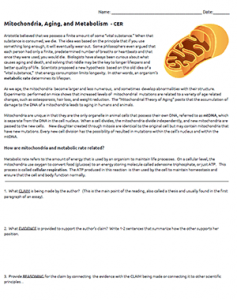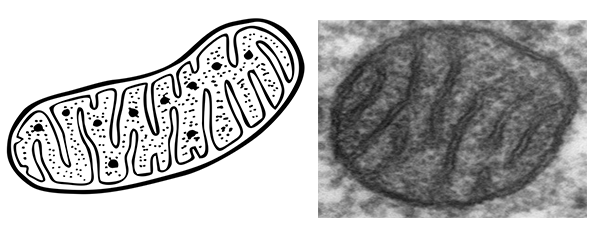
Students learn about the role of mitochondrial DNA in aging. In anatomy class, my students learn how specific cell parts can contribute to disease. Some diseases are specific to malfunctions in cell organelles. For example, Tay-Sachs is caused by dysfunctional lysosomes. Senescence, or aging, has been linked to a build-up of mutations in mitochondrial DNA, mtDNA.
Each mitochondrion divides independently and contains its own DNA. The endosymbiosis theory proposes that organelles like mitochondria and chloroplasts were once independent. They lived as prokaryotes and eventually came to live inside eukaryote cells. Because of this, mtDNA can accumulate mutations over time separate from the cell’s DNA.
Mitochondria are the powerhouses of the cell, responsible for producing energy. As we age, mitochondria accumulate damage. This can lead to a decline in energy production and a number of other age-related problems. This damage can be caused by a number of factors, including free radicals, inflammation, and toxins.
Mitochondria and Aging

There are a number of ways to protect mitochondria and slow the aging process. These include eating a healthy diet, exercising regularly, and getting enough sleep. There are also a number of supplements and therapies that have been shown to improve mitochondrial function.
Research on the relationship between mitochondria and aging is ongoing, and there is still much to learn. However, it is clear that mitochondria play a vital role in aging, and that protecting them can help to slow the aging process.
Students read a short passage describing mitochondria and the “Mitochondrial Theory of Aging.” They must then identify the claim being made by the author, the evidence provided and then state the reasoning for the claim (or the connection between the claim and the evidence.)
Sometimes I grade CER’s and sometimes I do them as part of an overall class discussion. If grading, I use a 1-2-3 format. 1 pt for identifying the claim, 2 pts for the evidence, and 3 pts for reasoning.
Grade Level: 11-12
Time Required: 15-20 minutes

